Identifying and Dealing with Citrus Suckers & Sprouts
If you grow citrus, you may be familiar with citrus suckers. Suckers can wreak havoc on tree growth and production if left unchecked. Citrus sprouts can cause problems as well. Learn how to identify both citrus suckers and sprouts, why they are harmful to citrus trees, and what to do when you find them.
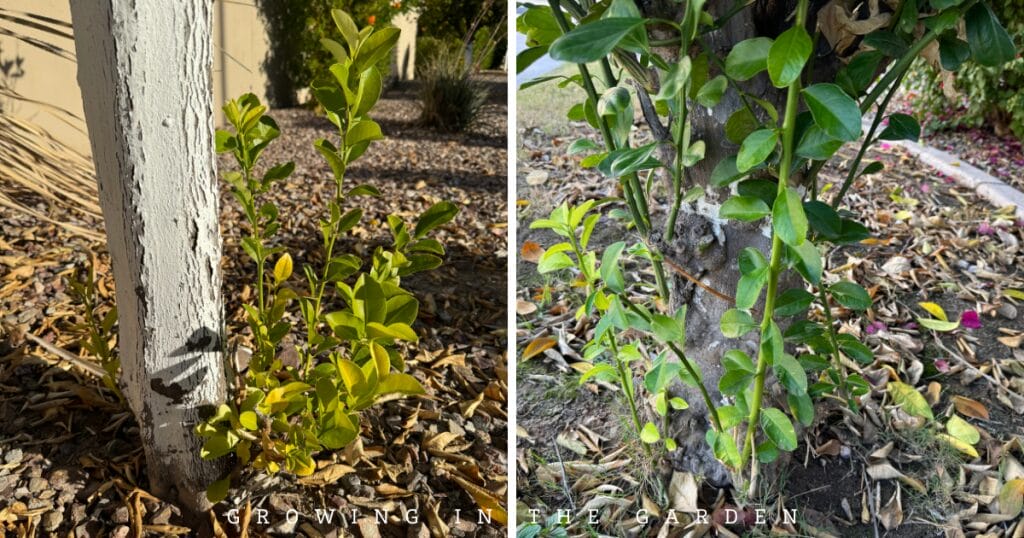
What are citrus suckers?
Suckers are shoots that grow from the trunk below the bud or graft union. They are often mistaken for new growth from the desired citrus variety, but suckers are a different plant altogether.
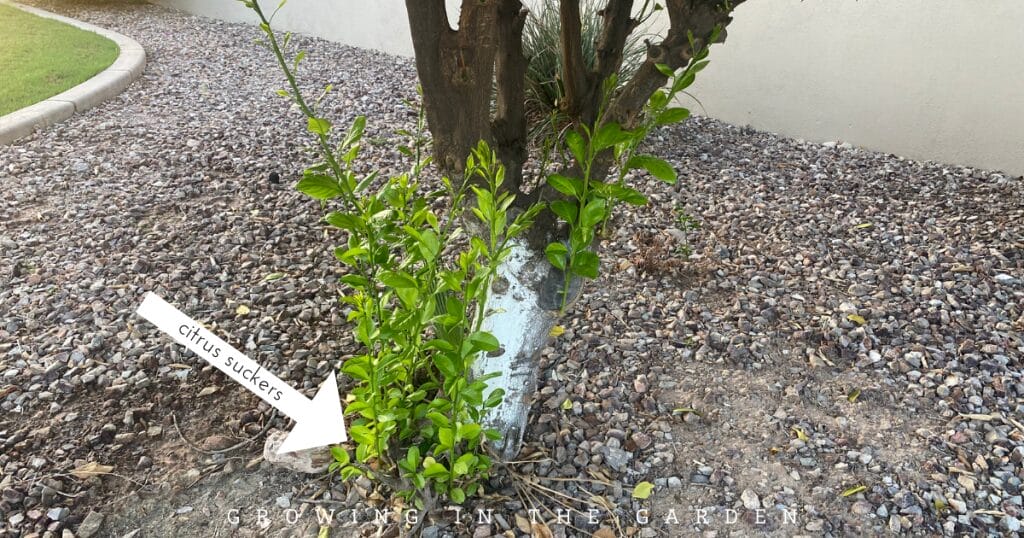
Look for the graft union on the trunk, which will appear as a visible seam or bump. If the growth is coming out below the graft union, it’s likely a sucker.
Suckers will grow straight up and typically resemble a thin, spindly stem with few leaves. The leaves often have a trifoliate leaf shape (characterized by a leaf divided into three leaflets). Shoots may also grow up through the soil around the tree; these should also be removed.
Bud or graft union: Place where the bud of the citrus variety was grafted onto the rootstock. Look for an area where the bark changes texture or the diameter of the trunk changes.
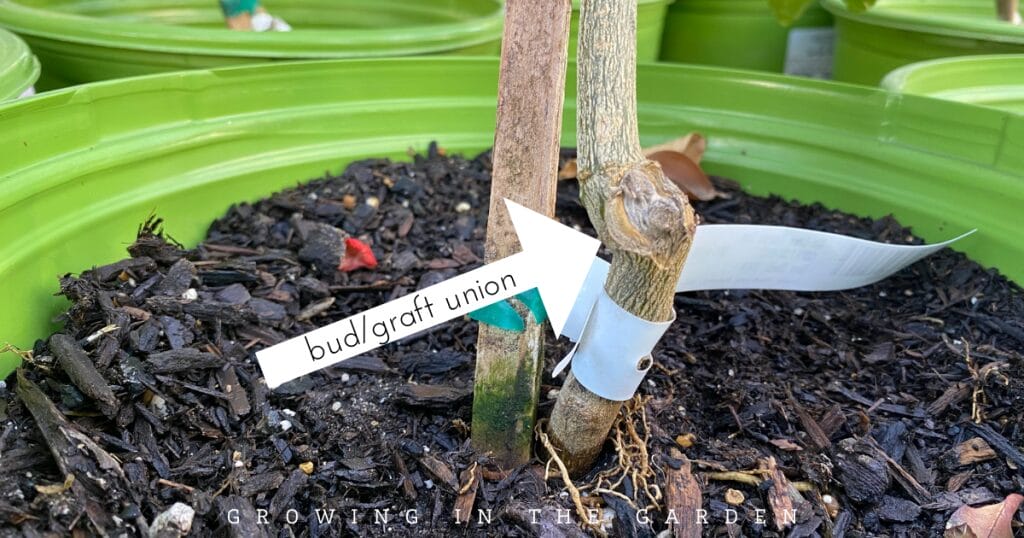
Rootstock: Another citrus variety that the citrus is grafted onto. Rootstocks are chosen to improve disease resistance, growth, or fruit quality. Standard rootstocks in Arizona are Flying Dragon, Trifoliate Orange, Sour Orange, Smooth Flat Seville, C-35, and Carrizo Citrange.1
What are citrus sprouts?
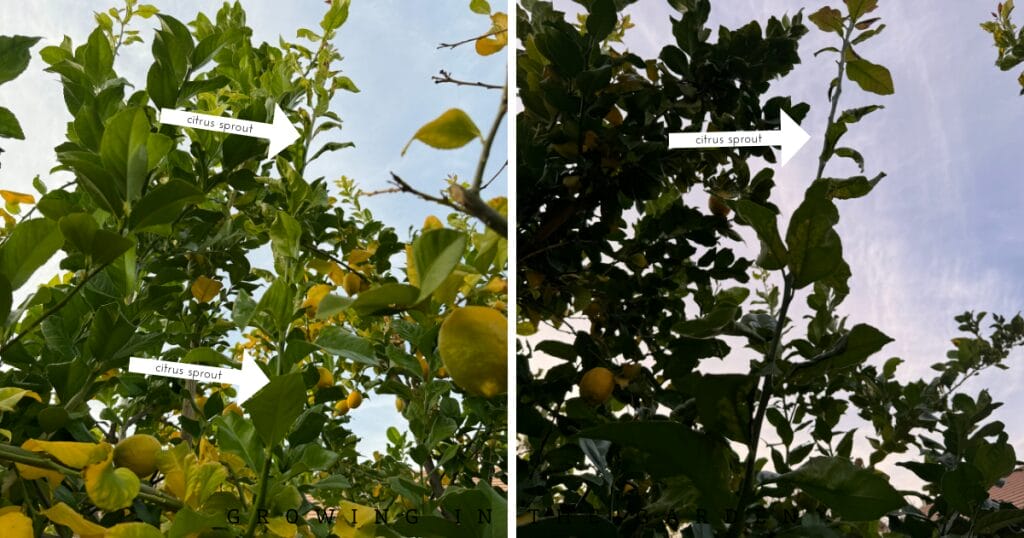
These quick-growing shoots are also called “water sprouts” or “suckers” and can be found below and above the bud union. They are green and without bark (herbaceous). Sprouts growing above the bud union are the same variety as the desired tree (not the rootstock).
Citrus sprouts grow straight up either from the trunk or large limbs. They develop excessive thorns and little, if any, fruit. Their leaf shape may also differ from the grafted variety. 2
Lemon trees especially often have vigorous, thorny sprouts that grow quite tall.
A note about “skirting”. Skirting is removing the low-hanging branches for a more tree-like and less bush-like appearance. Skirting is not recommended because it exposes the trunk to sunlight and removes the lower canopy fruit. A skirted tree may send out sprouts to protect its trunk. Sprouts below the graft line should be removed. Learn more about how and when to prune fruit trees in this guide.
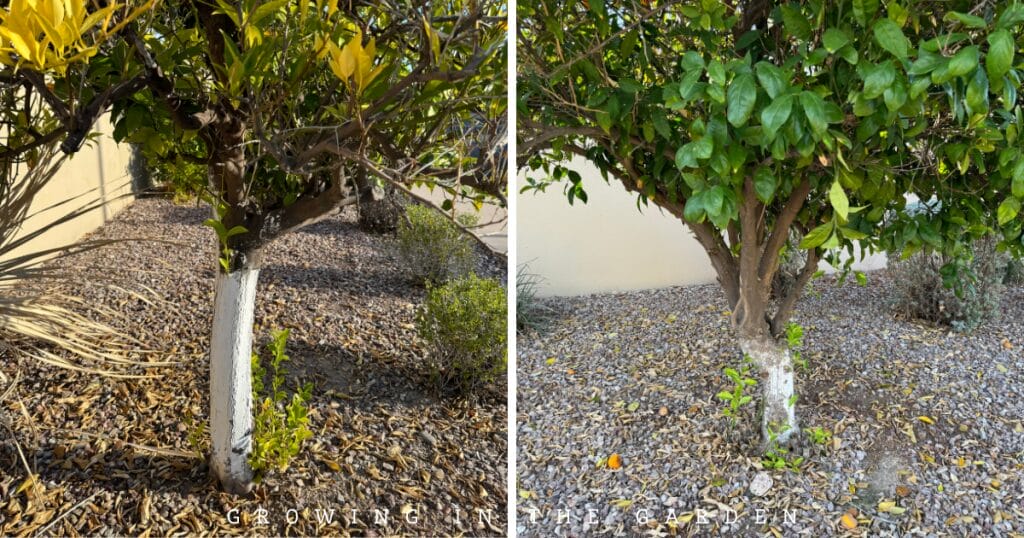
Do you have to remove citrus suckers and sprouts?
Suckers take vital resources away from the desired citrus variety and can ultimately result in stunted tree growth and reduced fruit production. Fruit formed on suckers will be the rootstock variety – usually a bitter or sour orange. If left unattended, citrus suckers will continue to sprout and can even take over the entire tree.
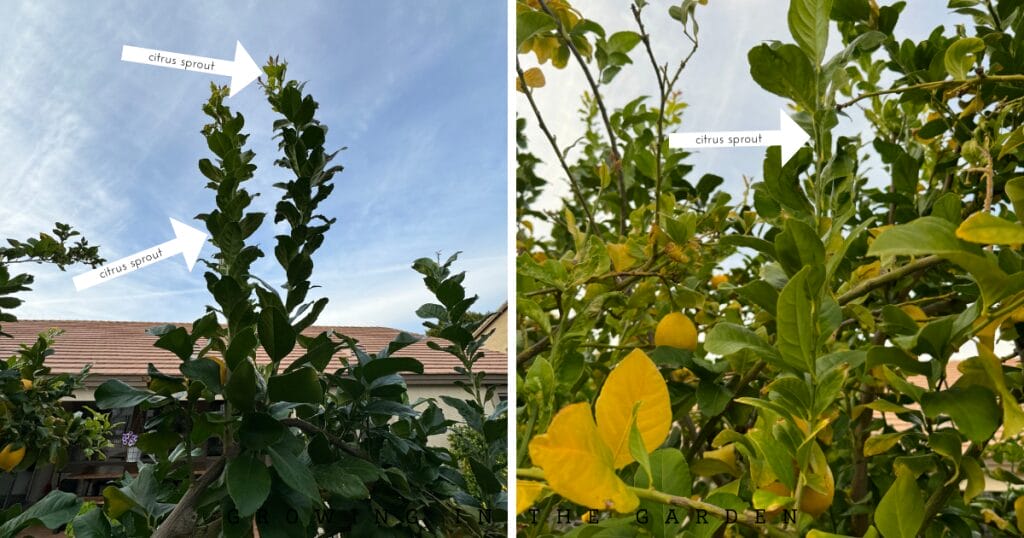
Sprouts left unchecked can make harvesting the desired fruit difficult. Also, If left to grow, sprouts and suckers can out-compete the grafted tree’s canopy. If sprouts form fruit, they will be unpalatable. A water sprout often cannot support the weight of fruit and may break.
You may leave sprouts that emerge above the graft line in place to fill in the canopy, but typically they are removed.
How do you remove sprouts and suckers?
If you do find citrus suckers on your tree, it’s essential to remove them promptly. The best way to remove suckers is by removing them by hand when they are young. Grasp the sucker firmly, and pull down. The sucker should break off near the trunk.
If they are too large to remove by hand, cut off with clean pruners as close to the rootstock as possible.
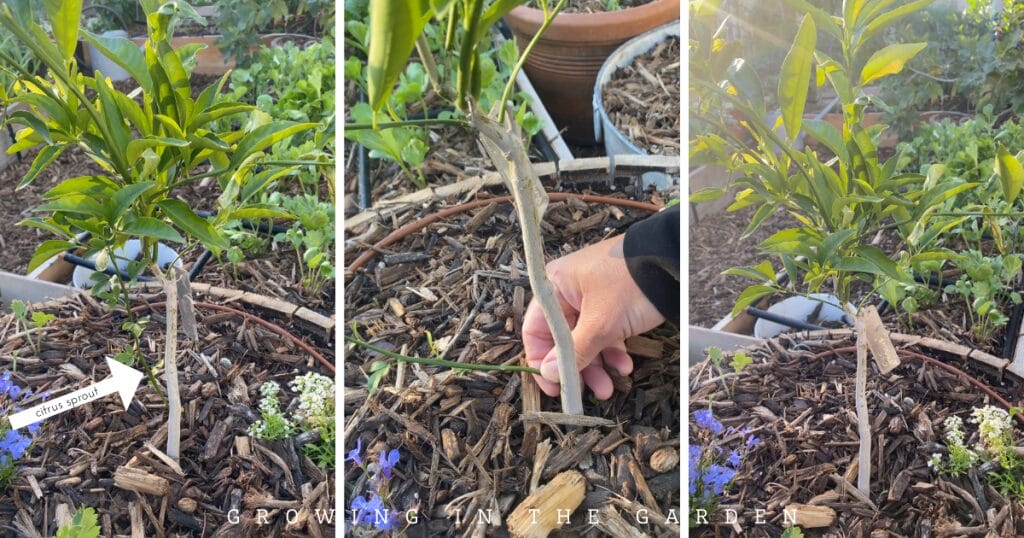
When to remove citrus sprouts and suckers
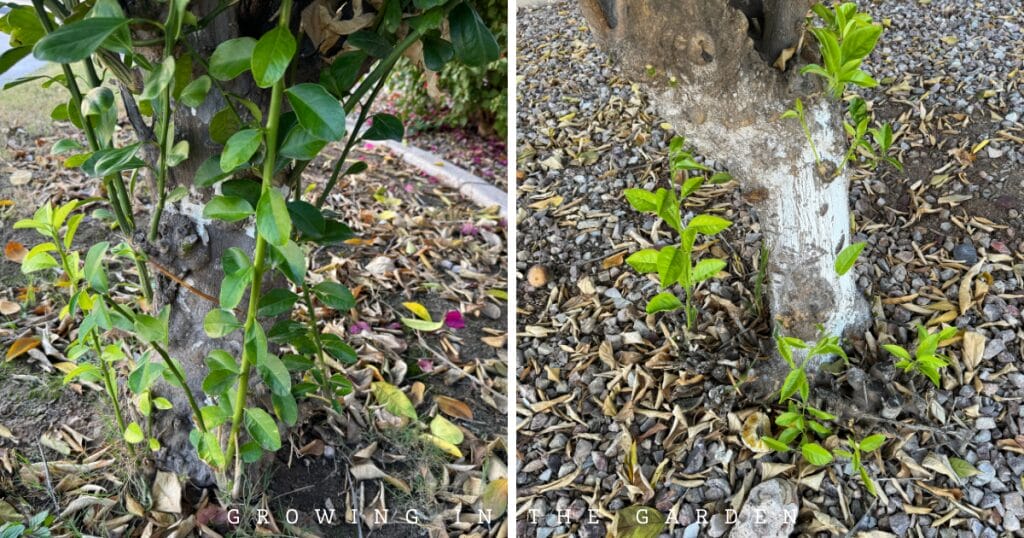
Remove small sprouts and suckers by hand at any time throughout the year.
Remove larger sprouts and suckers during the early spring. This gives the tree time to grow new foliage to shade newly exposed wood to damage from the summer sun. Removing larger limbs from May – October may open up the trunk or inside of the tree to sun damage. Any exposed wood should be protected from sunlight with white paint.2

Citrus suckers and sprouts can be a nuisance for citrus tree growers, but with proper identification and removal, you can keep your trees healthy and productive.
Sources:
- https://extension.arizona.edu/sites/extension.arizona.edu/files/pubs/az1850-2020.pdf
- https://extension.arizona.edu/sites/extension.arizona.edu/files/pubs/az1455.pdf
Resources for Growing and Using Citrus:
Questions about how to grow citrus?
This article answers 10 questions about successfully growing citrus, including step-by-step guidelines for selecting the right variety, proper planting techniques, and best practices for watering and fertilizing.
Learn the 10 biggest citrus growing mistakes (and how to avoid them)
Discover the most common pitfalls citrus growers face, from over-watering to incorrect pruning, and find expert tips on preventing and fixing each issue.
Learn about more than 30 different types of citrus trees
Explore an extensive list of citrus varieties—from classic oranges and lemons to uncommon hybrids—and get helpful insights on selecting the best tree for your climate and taste preferences.
How to grow citrus in containers
Get practical advice on choosing the correct container, selecting the proper soil, and creating the ideal growing conditions to cultivate citrus trees on a patio or balcony.
Learn how to juice oranges with 3 top tips for maximizing taste and preserving juice.

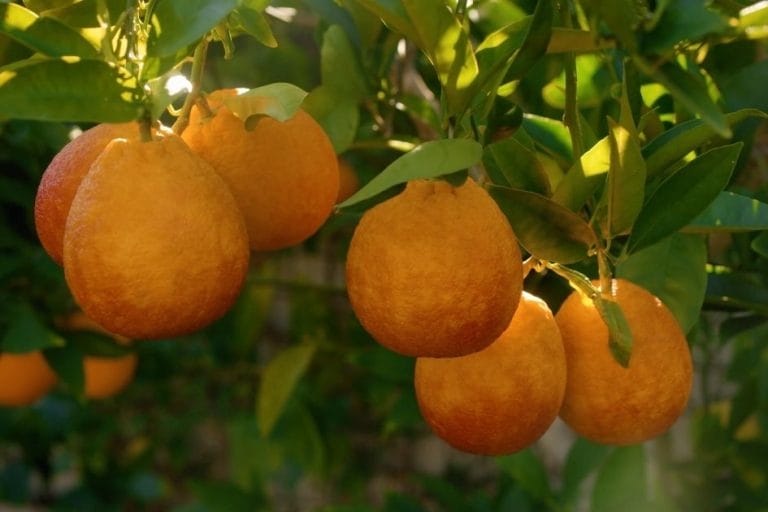
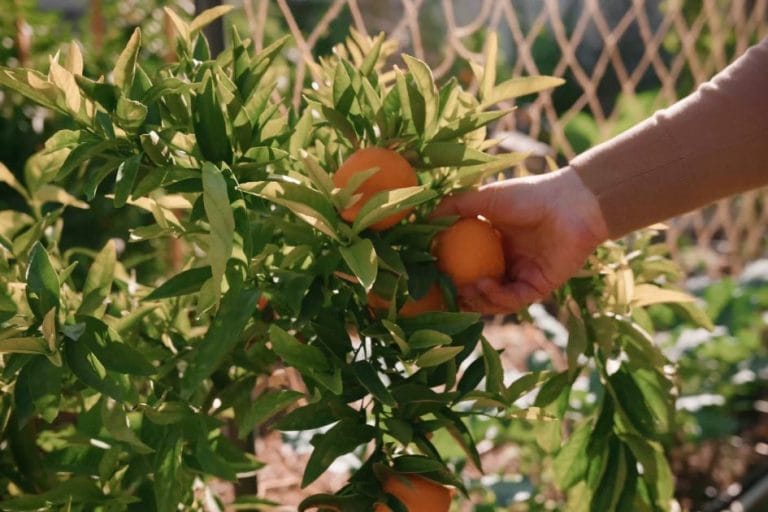

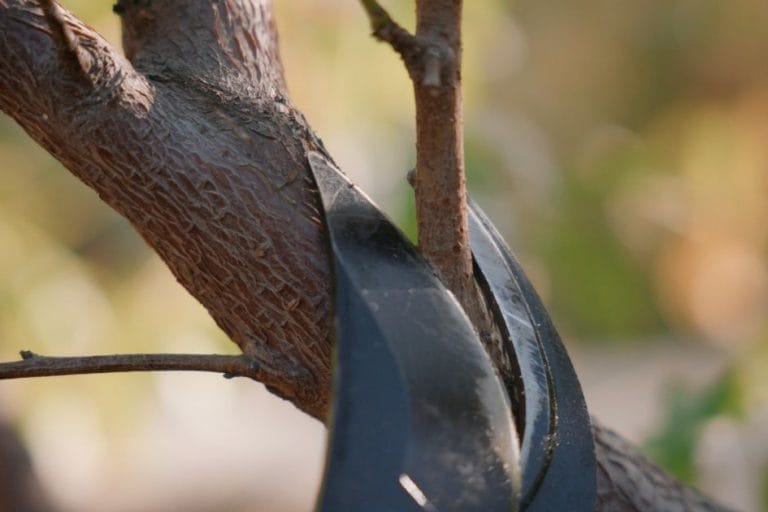

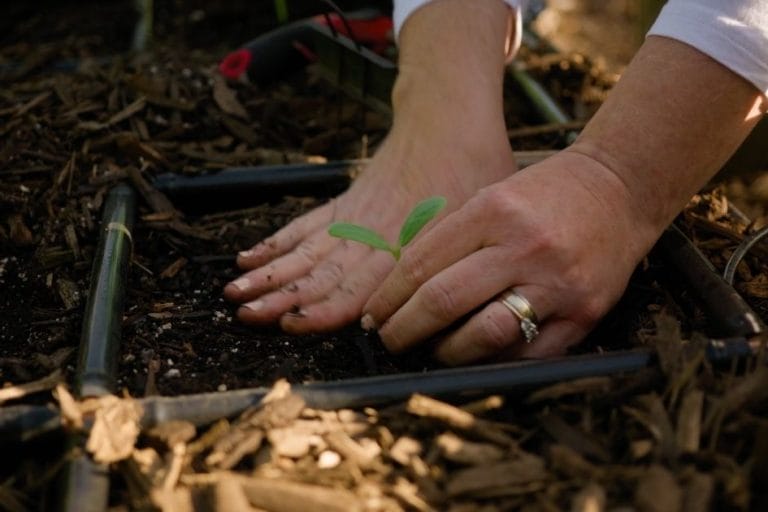
Leave a comment on Identifying and Dealing with Citrus Suckers & Sprouts